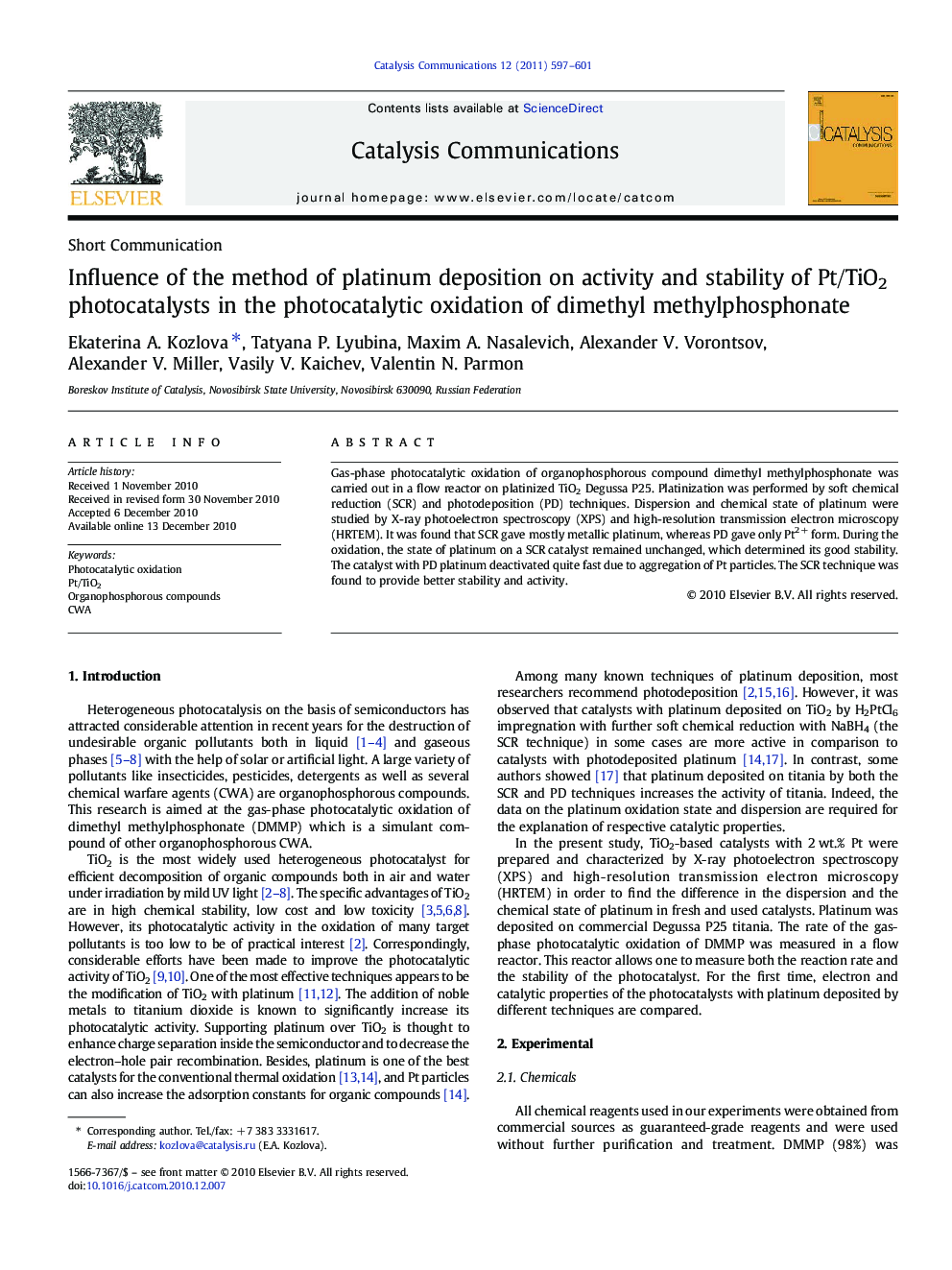| Article ID | Journal | Published Year | Pages | File Type |
|---|---|---|---|---|
| 51104 | Catalysis Communications | 2011 | 5 Pages |
Gas-phase photocatalytic oxidation of organophosphorous compound dimethyl methylphosphonate was carried out in a flow reactor on platinized TiO2 Degussa P25. Platinization was performed by soft chemical reduction (SCR) and photodeposition (PD) techniques. Dispersion and chemical state of platinum were studied by X-ray photoelectron spectroscopy (XPS) and high-resolution transmission electron microscopy (HRTEM). It was found that SCR gave mostly metallic platinum, whereas PD gave only Pt2+ form. During the oxidation, the state of platinum on a SCR catalyst remained unchanged, which determined its good stability. The catalyst with PD platinum deactivated quite fast due to aggregation of Pt particles. The SCR technique was found to provide better stability and activity.
Graphical AbstractXPS Pt4f core-level spectra of the Pt/TiO2 photocatalysts obtained by soft chemical reduction (a) and PD (b) techniques before (1) and after (2) the dimethyl methylphosphonate photocatalytic oxidation.Figure optionsDownload full-size imageDownload as PowerPoint slideResearch Highlights► Organophosphorous DMMP photocatalytic oxidation occurs on Pt/TiO2 under UV-light. ► Pt soft chemical reduction is preferable technique in comparison to Pt photodeposition. ► Catalyst with photodeposited Pt deactivated fast due to the Pt particles aggregation. ► Deactivation of the catalysts, obtained by Pt soft chemical reduction, is negligible.
